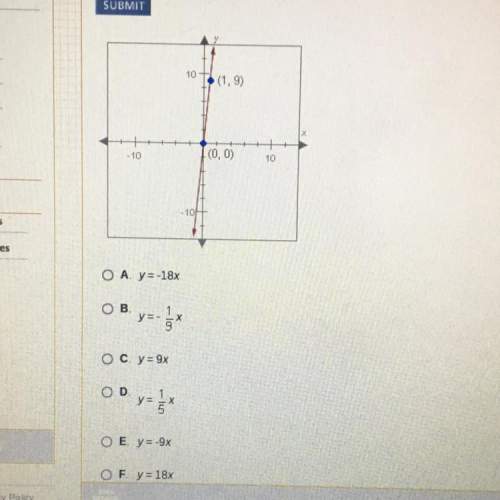
Mathematics, 24.04.2020 19:50 rosas8
Let D be a parallelogram with vertices (0, 0), (−1, 6), (−2, 0), (−1, −6) and D* = [0, 1] [0, 1]. (Note that D* = [0, 1] [0, 1] suggests the ordered list of vertices in D*, moving around the parallelogram in the counterclockwise direction : (0, 0), (0, 1), (1, 1), (1, 0). Likewise, move around in the counterclockwise direction in D when evaluating the transformation matrix A). Find a linear map T such that T(D*) = D.

Answers: 3
Another question on Mathematics

Mathematics, 21.06.2019 19:00
Daniel expanded the expression as shown below -2(-8x-4y+3/4)=-10x-8y-11/4 what errors did he make? check all that apply
Answers: 3


Mathematics, 21.06.2019 22:00
Rewrite 9 log, x2 in a form that does not use exponents. 9log, x = log, x
Answers: 3

Mathematics, 21.06.2019 23:30
The experience c-0.25c can be used to find the cost of an item on sale for 25% off which expression beloit equivalent to c-0.25c
Answers: 1
You know the right answer?
Let D be a parallelogram with vertices (0, 0), (−1, 6), (−2, 0), (−1, −6) and D* = [0, 1] [0, 1]. (N...
Questions






Social Studies, 07.07.2019 13:40


Business, 07.07.2019 13:40


Social Studies, 07.07.2019 13:40


Mathematics, 07.07.2019 13:40

Mathematics, 07.07.2019 13:40

Mathematics, 07.07.2019 13:40



Mathematics, 07.07.2019 13:40

Mathematics, 07.07.2019 13:40

Chemistry, 07.07.2019 13:40




